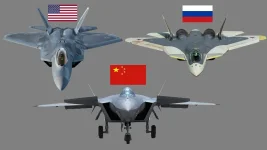- Views: 3K
- Replies: 33

The Indian Navy's ambitious Project 75 India (P-75(I)) to acquire six advanced diesel-electric submarines with Air Independent Propulsion (AIP) has hit a snag.
Both leading contenders, Germany's ThyssenKrupp Marine Systems (TKMS) and Spain's Navantia, have failed to fully meet the Navy's stringent requirements for AIP technology during field evaluation trials, according to sources within the defence establishment.
The AIP system, which allows submarines to operate submerged for extended periods, is a crucial element of the P-75(I) program.
The Navy's insistence on a proven system stems from concerns over potential delays if the indigenously developed AIP system by the DRDO is chosen. Past experience with delays in the integration of the DRDO AIP system into the Scorpene-class submarines has fueled this apprehension.
While Navantia's AIP system, utilizing Bio Ethanol Stealth Technology, comes closest to meeting the Navy's requirements, its first submarine equipped with this technology won't be operational until 2026. Although Navantia has conducted extensive testing and secured an order from the Spanish Navy, the Indian Navy remains unconvinced about its maturity.
TKMS, on the other hand, presented an AIP system smaller than the Navy's specifications. This is because the system is designed for the smaller Type 214 submarines, necessitating the development of a larger system for the Indian Navy's needs. Furthermore, the fuel cell batteries offered by TKMS differ from those used in the German Navy's submarines, requiring additional performance validation.
Despite these shortcomings, both companies remain in contention. A source indicated that while neither fully meets the RFP requirements, both are capable. Navantia appears to have an edge due to its S-80 class submarine, which is already in service with the Spanish Navy and could be adapted with minor modifications. TKMS, however, would need to design a new submarine entirely.
Adding another layer of complexity, the P-75(I) program is being pursued under the strategic partnership model, intended to boost private sector participation in defence manufacturing. However, the current situation sees state-run MDL, partnered with TKMS, as a frontrunner, raising concerns about the program's adherence to its original intent.
This development comes after several other international contenders, including Saab and Rosoboronexport, withdrew from the competition citing stringent liability clauses. Even TKMS initially hesitated but re-entered the race following German government backing and some concessions from the Indian Navy.
The P-75(I) program, first envisioned in 1998 as part of a 30-year submarine building plan, has faced numerous delays. With only six Scorpene-class submarines built so far, the need for these new submarines is critical for the Indian Navy to maintain its operational capabilities and regional influence.
The Navy now faces a difficult decision: accept a less-than-ideal AIP system or risk further delays in this crucial acquisition program.

